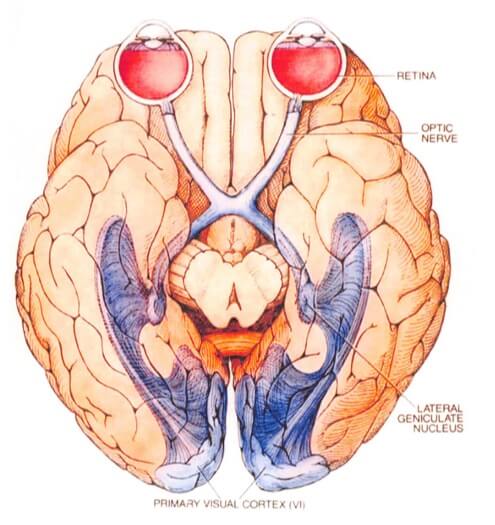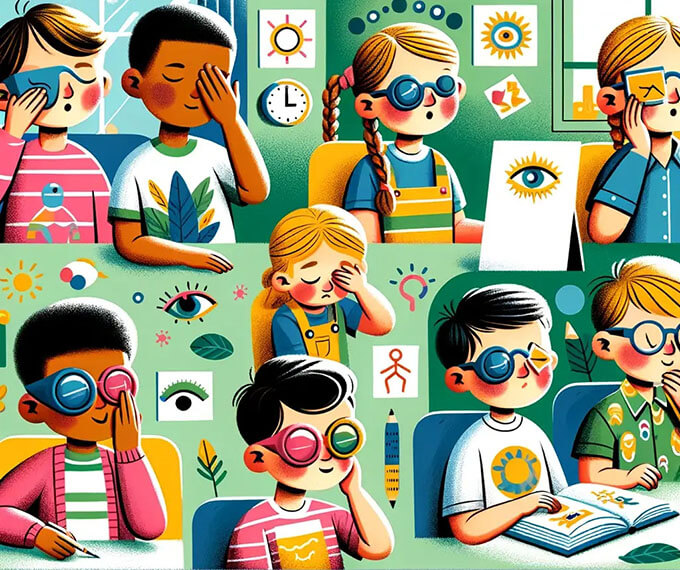Services
Autism Spectrum Disorders and other developmental disabilities can manifest in various vision-related issues, yet many children do not undergo comprehensive eye evaluations, and some are informed that their vision is normal. It’s crucial to recognize that several behaviors associated with these spectrum disorders have a visual component. Addressing these visual aspects can lead to a significant improvement in children’s behavior and their capacity to learn and engage with the world around them.
It’s important to note the intricate connection between our eyes and the brain. When someone has a neurological disorder affecting the brain, it can impact their vision. Having clear 20/20 vision at a distance of 20 feet is just one of the 15 visual skills required for reading, learning, and performing daily activities effectively.
In fact, the processing of visual information involves a network of 35 brain areas, interconnected by at least 305 intra-cortical pathways. Remarkably, approximately 70% of the sensory input received by the brain is visual in nature.

While 25% of typically developing children experience challenges with reading and learning, a significant portion of these difficulties can be attributed to undiagnosed vision problems. Moreover, research reveals that a notably higher percentage of children diagnosed with autism spectrum disorders also encounter vision issues. Addressing these vision problems can lead to substantial improvements in their quality of life.
Additionally, many behaviors associated with autism spectrum disorders have a visual component. These behaviors include a fascination with spinning objects, closely scrutinizing items, repetitive watching of objects, a preference for shiny objects, and struggles with maintaining eye contact. Other observable characteristics encompass disruptive or uncooperative behavior, avoidance of eye contact, aversion to visually engaging with blackboards, inconsistent handwriting, difficulty in simultaneously listening and looking, overreliance on peripheral vision, a stiff-legged gait, poking at the sides of the eyes, closing or covering one eye, an inability to catch or throw a ball, and closing eyes to enhance auditory perception.
Addressing these underlying vision issues enables these children to better engage with and adapt to their surroundings. Improving a child’s vision can lead to neurological changes that positively impact their understanding of the world.
Remarkably, some non-verbal children with autism begin to speak when provided with specialized glasses designed to enhance their visual processing abilities. Additionally, certain children cease their habit of closely inspecting objects.
Diagnosis and treatment of vision-related challenges in individuals with autism spectrum disorders are carried out by developmental optometrists. The focus of these assessments centers on determining how to enhance a child’s connection to their environment. One key challenge involves improving visual fixation, which is the precise aiming of the eyes at specific points in space. For more information on this visual skill, please refer to the provided link.
Solutions to these issues can often be as straightforward as providing the child with a pair of specialized glasses. To learn more, please don’t hesitate to contact our office.
If your child exhibits any of the follwing symptoms, it may indicate that vision-related issues are contributing to their discomfort. A comprehensive Neuro-Developmental vision assessment conducted by a specialized Behavioral and Developmental optometrist is essential to evaluate the extent of the problem and formulate the most suitable treatment options.

- Avoidance of eye contact
- Closing or covering one eye
- Difficulty in catching or throwing a ball
- Closing eyes to enhance hearing
- Irregular and uneven handwriting
- Inability to simultaneously listen and look
- Excessive reliance on peripheral vision
- A stiff-legged gait
- Poking or touching the sides of the eyes
- Disruptive behavior
- Uncooperative behavior
- Repeatedly turning lights on and off (similar to disco-style)
- Fascination with spinning objects
- Close examination of objects (eyeballing)
- Repetitive viewing of objects
- Attraction to shiny objects
- Struggles with maintaining or establishing eye contact
